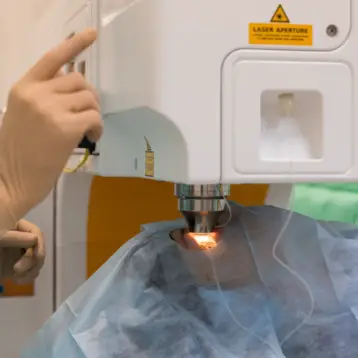|
Transdermal patches (which rely on absorption through the skin) have not been a widely effective delivery mechanism for drugs, since the skin acts as a natural barrier. This may now change due to new drug delivery microneedle technology developed by HP. The new technology is similar to the technology employed in HP’s patented process for its inkjet cartridges.
HP and Crospon, a medical device developer, have recently entered a licensing agreement for their drug delivery platform, which enables painless, controlled release of one or more drugs in a single patch applied to the skin. The drug delivery skin patch may be available to consumers by year 2010.
The epidermis, which is the outer skin layer, prevents invasion of bacteria and viruses into the body. Conventional needles penetrate far beyond the epidermis, which is a fraction of a millimeter thick, into the nerve-packed dermis layer, causing us pain. Because the maximum penetration of the skin patch’s microneedles is 0.5mm, they do not stimulate the pain receptors that are located about 0.75mm under the skin’s surface.
|
One patch contains about 150 microneedles and enables the drug’s dose and time of delivering to be controlled by a microchip. The patch also contains 400 cylindrical reservoirs that can be filled with the necessary drugs, and is therefore capable of carrying more several drugs at the same time. This product may be particularly helpful for patients who are on a multi-drug regimen and have trouble remembering when they should take each drug.
Intradermal delivery of medications, just below the surface of the skin, radically reduces discomfort compared to traditional hypodermic needles. The microneedles allow medication to quickly enter the bloodstream, resulting in the potential delivery of lower and more precise dosages and enabling precise control of dosage timing.
The microneedle skin patch can deliver drugs which are currently injected or taken daily. Until now, only chemicals which can be absorbed directly through the skin, like nicotine, tranquilizers and progesteron, could be delivered using a patch, whereas most drugs have bigger molecules and therefore required a needle to break the skin barrier. Since the HP-developed skin patch uses microneedles that penetrate the skin only slightly, it enables using the technique with a much wider variety of drugs and biopharmaceuticals. For instance, the patch could be used by diabetes patients for the delivery of both insulin and glucagon (which lowers the risk of insulin overdose), and may replace inhalers used by asthma patients.
|
Alongside the microneedle patch’s promise and advantages, a couple of issues remain to be clarified. The manufacturers must demonstrate that the patch’s very gentle yet dense piercing of the skin doesn’t enable bacteria and viruses to penetrate the skin and cause infections. Another aspect that should be taken into consideration is the cost efficiency of the new microneedles patch, as it may end up costing too much to deliver very cheap drugs.
TFOT recently covered the development of a couple of other devices for needle-free drug administration. The University of California Santa Barbara’s Pulsed Microjet System delivers protein drugs into the skin without pain or bruising, and the Queen’s University Belfast jet injection is designated to be used in PDT treatment of skin cancer.
More information on the new skin patch technology can be found on the HP website.
You are invited to discuss this technology on the TFOT forums.












